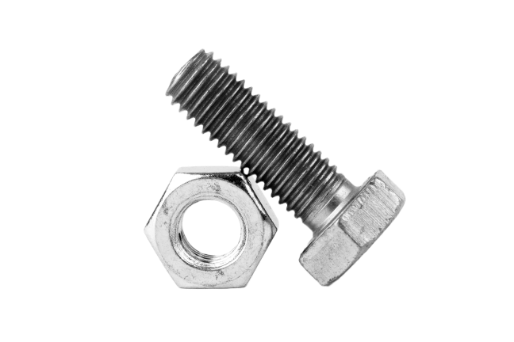
Shear forces in construction and engineering determine how well materials hold together under stress. The shear strength of screws plays a significant role in ensuring fasteners can resist lateral pressure without breaking. Selecting the right screw for a project involves understanding material properties, load-bearing capacity, and environmental conditions.
Understanding Shear Strength of Screws
The shear strength of screws or fasteners refers to the maximum force a fastener can endure before breaking when pressure is applied parallel to its axis. This property is important in applications where materials experience shifting forces, such as framing, decking, and structural connections. Unlike tensile strength, which measures resistance to pulling forces, resistance to lateral loads determines how well a screw maintains its hold under sideways pressure.
For example, in insulated metal panel construction, screws must maintain a tight seal and hold under constant expansion and contraction from temperature changes. If fasteners without the proper sealing or pull-out strength are used, panels may loosen or allow air and moisture infiltration, compromising the building’s efficiency and durability. Choosing the correct screw type ensures the panels stay secure and the envelope remains weather-tight over time.
Factors Influencing Fastener Screw Shear Strength
Several key factors impact the shear strength of screws:
Material Composition
The type of metal used in fastener production significantly affects performance. Carbon steel screws, particularly those conforming to respective IFI (International Fasteners Institute) standards, offer higher resistance to lateral loads than softer metals such as aluminum or low-carbon steel.
Screw Design
Features such as shank diameter, thread pitch, and overall geometry contribute to performance under stress. A larger shank diameter typically increases load-bearing capacity, while thread density influences how forces distribute along the fastener.
Manufacturing Quality
Production processes like heat treatment and precision threading determine whether a screw can withstand applied forces consistently. ISO 898-1 provides the current standards for mechanical properties of steel fasteners, ensuring consistency in strength classifications and material specifications.
Taking a Closer Look at Shear Strength of Fasteners
Nails and screws behave differently under lateral stress. Nails, due to their flexibility, absorb forces more effectively, reducing the risk of snapping. However, screws provide better holding power and are less likely to loosen over time. Choosing the right fastener depends on the application:
- Nails are ideal for framing, where materials experience movement and require flexibility.
- Screws offer better long-term holding power and are preferred in structural applications where stability is required.
Shear Strength of Different Fastener Types
The type of screw used in an application determines its resistance to lateral loads. Here’s how common screws compare:
- #8 and #10 Screws – Frequently used in construction, with shear strength varying based on material and thread design. A #10 screw made from medium-carbon steel typically withstands higher lateral forces than a #8 screw.
- Wood Screws – Designed for woodworking projects, these screws feature a tapered shank and coarse threads that provide excellent grip.
- Lag Screws – Thick, heavy-duty fasteners with a high resistance to lateral loads, often used in large timber connections.
- Self-Tapping Screws – Used for metal and plastic applications, these screws create their own threads, with load-bearing capacity depending on depth and material.
- Drywall Screws – Designed to secure drywall to wood or metal, these screws have lower load-bearing capacity and should not be used for structural applications.
How to Calculate Shear Strength in Screws & Fasteners
To determine the appropriate fastener for a specific application, engineers calculate the shear strength of screws based on material properties and force analysis. The basic formula used for estimating shear capacity is:
Shear Strength = Material Shear Stress × Cross-Sectional Area
For example, a screw with a 0.190-inch shank diameter made of medium-carbon steel may have a shear strength of approximately 2,000 pounds-force (lbf) per fastener. However, this varies based on installation conditions, environmental factors, and fastener orientation.
External Factors That Affect Shear Strength
Beyond design and material properties, environmental factors influence the longevity and performance of screws:
Installation Practices
Over-tightening can weaken a screw by creating excess stress concentrations, leading to premature failure. Proper torque application ensures optimal performance.
Environmental Exposure
Moisture, chemicals, and temperature fluctuations degrade screw materials over time. Corrosion-resistant stainless steel fasteners, particularly marine-grade 316 stainless steel, maintain their mechanical properties even in extreme conditions.
Fastener Coatings and Corrosion Resistance
Protective coatings such as zinc plating, hot-dip galvanization, and ceramic coatings help prevent rust and corrosion, preserving the screw’s shear strength over time. Uncoated screws may corrode faster in humid or outdoor environments, reducing their load-bearing capacity. Choosing coated fasteners improves long-term durability, especially for exterior or high-moisture applications.
Load Cycles and Fatigue
Repeated loading and unloading can weaken screws over time. In high-vibration environments, selecting fasteners with higher fatigue resistance helps maintain structural integrity.
With an understanding of shear strength factors and how different screws perform under lateral stress, the next step is selecting the right fastener for the job.
Choosing the Right Fastener for Shear Strength
When selecting screws for a project, consider the following:
- Load Requirements – Determine the expected shear forces the fastener will experience and choose screws designed to handle those loads. For example, a standard #10 wood screw made of medium-carbon steel can typically support around 1,200–1,500 pounds-force (lbf) in shear. However, actual load capacity varies based on material density, screw length, and depth of embedment.
- Safety Margins – Engineers often include additional safety factors to accommodate unexpected stress and variations in material properties. Using screws rated for higher loads than the minimum required ensures greater structural reliability.
- Proper Installation Practices – Installation affects shear strength as much as material and design. Follow these best practices to maximize fastener performance:
- Pre-drilling holes when working with hardwoods or brittle materials reduces stress on the screw and prevents splitting.
- Applying proper torque settings ensures the screw is neither under-tightened (causing movement) nor over-tightened (weakening the material around it).
- Maintaining adequate spacing between screws prevents stress concentrations that can lead to premature failure. Fasteners placed too close together may weaken the surrounding material and reduce overall shear capacity.
- Industry Standards – Using screws that meet ISO 898-1 or similar regulations ensures they possess the necessary mechanical properties for their intended application.
Choose High-Strength Screws from Fastener Systems
Fastener Systems offers a wide range of durable screws built for demanding applications. From lag screws to self-tapping fasteners, our products provide the reliability needed for secure connections. Find the right solution for your next project.
Contact us today for more information.

